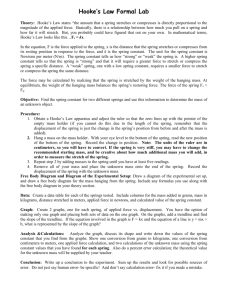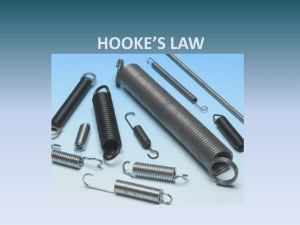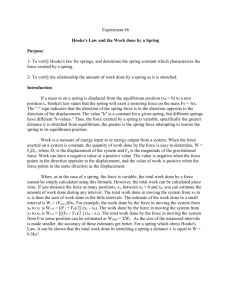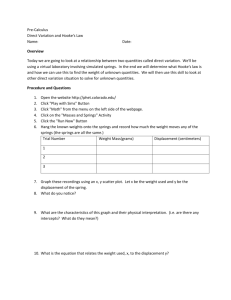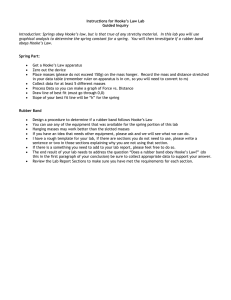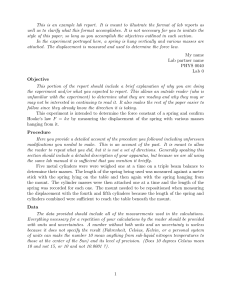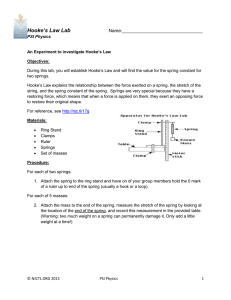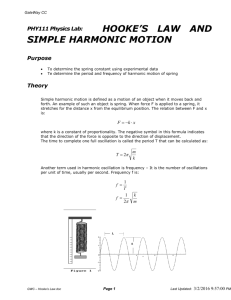General Physics Lab #1 - Hooke`s Law Winter
advertisement
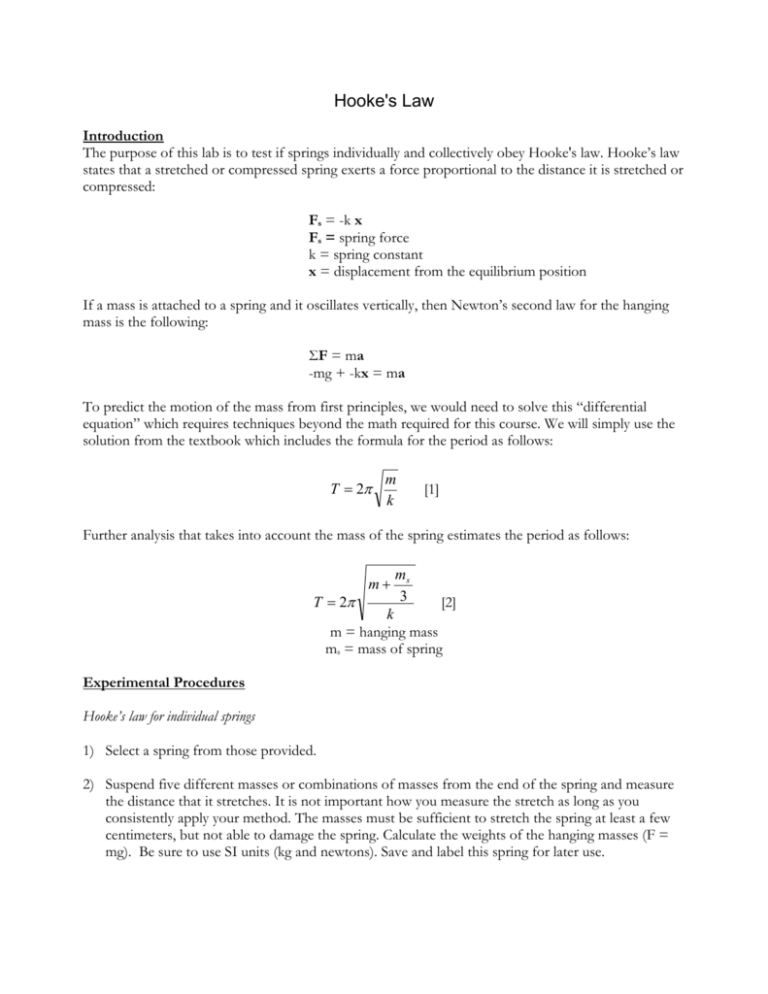
Hooke's Law Introduction The purpose of this lab is to test if springs individually and collectively obey Hooke's law. Hooke’s law states that a stretched or compressed spring exerts a force proportional to the distance it is stretched or compressed: Fs = -k x Fs = spring force k = spring constant x = displacement from the equilibrium position If a mass is attached to a spring and it oscillates vertically, then Newton’s second law for the hanging mass is the following: ΣF = ma -mg + -kx = ma To predict the motion of the mass from first principles, we would need to solve this “differential equation” which requires techniques beyond the math required for this course. We will simply use the solution from the textbook which includes the formula for the period as follows: T 2 m k [1] Further analysis that takes into account the mass of the spring estimates the period as follows: T 2 m ms 3 [2] k m = hanging mass ms = mass of spring Experimental Procedures Hooke’s law for individual springs 1) Select a spring from those provided. 2) Suspend five different masses or combinations of masses from the end of the spring and measure the distance that it stretches. It is not important how you measure the stretch as long as you consistently apply your method. The masses must be sufficient to stretch the spring at least a few centimeters, but not able to damage the spring. Calculate the weights of the hanging masses (F = mg). Be sure to use SI units (kg and newtons). Save and label this spring for later use. 3) Plot the results using Excel with the force in newtons on the vertical axis and the displacement in meters on the horizontal axis. Plot the error bars as estimated for displacement. You may ignore error bars for force since the error will be small. Add a trend line and display both the equation and R2. Review and obey the general lab instructions regarding graph formats. 4) The slope of the equation given by Excel is the estimate of the spring constant, k, in N/m. You do not need to calculate the error in the spring constant. An R2 value close to 1 indicates that Hooke’s law should be deemed true for this spring for the range of applied forces. Show your plot to your instructor and discuss your conclusion. 5) Select another spring and repeat steps 2 through 4. Hooke’s law for springs in series 6) Attach the two springs used previously in series. Theory predicts that the total spring constant will be: ktotal = k1k2/(k1+k2) 7) Repeat steps 2 through 4 for the combined system. Be sure that each spring is stretched, but not overstretched. How does the predicted spring constant compare to the value derived by the graph in Excel? Calculate an encountered error = 100% * |theory – experiment|/theory. You do not need to obtain an estimated error for any of the k values. Period of oscillation 8) Attach a measured mass to an individual spring and displace it from equilibrium. You may need to use tape to prevent the mass from becoming airborne. Measure the initial displacement. Measure the time it takes to complete 10 oscillations. Calculate the experimental period (the measured time divided by the number of oscillations) and compare it to the theoretical period (use equation [1] or [2]). You do not need to calculate error in the theoretical period since you do not have an estimated error in the spring constant. 9) Repeat step 8 several times. You can vary the mass, spring, or initial displacement. Which variables affect the period? Hooke’s law for rubber bands 10) Repeat steps 1 to 5, 8, and 9 with a rubber band. Note: Do not use the formula k = mg/x to calculate the spring constant during any portion of this experiment.

